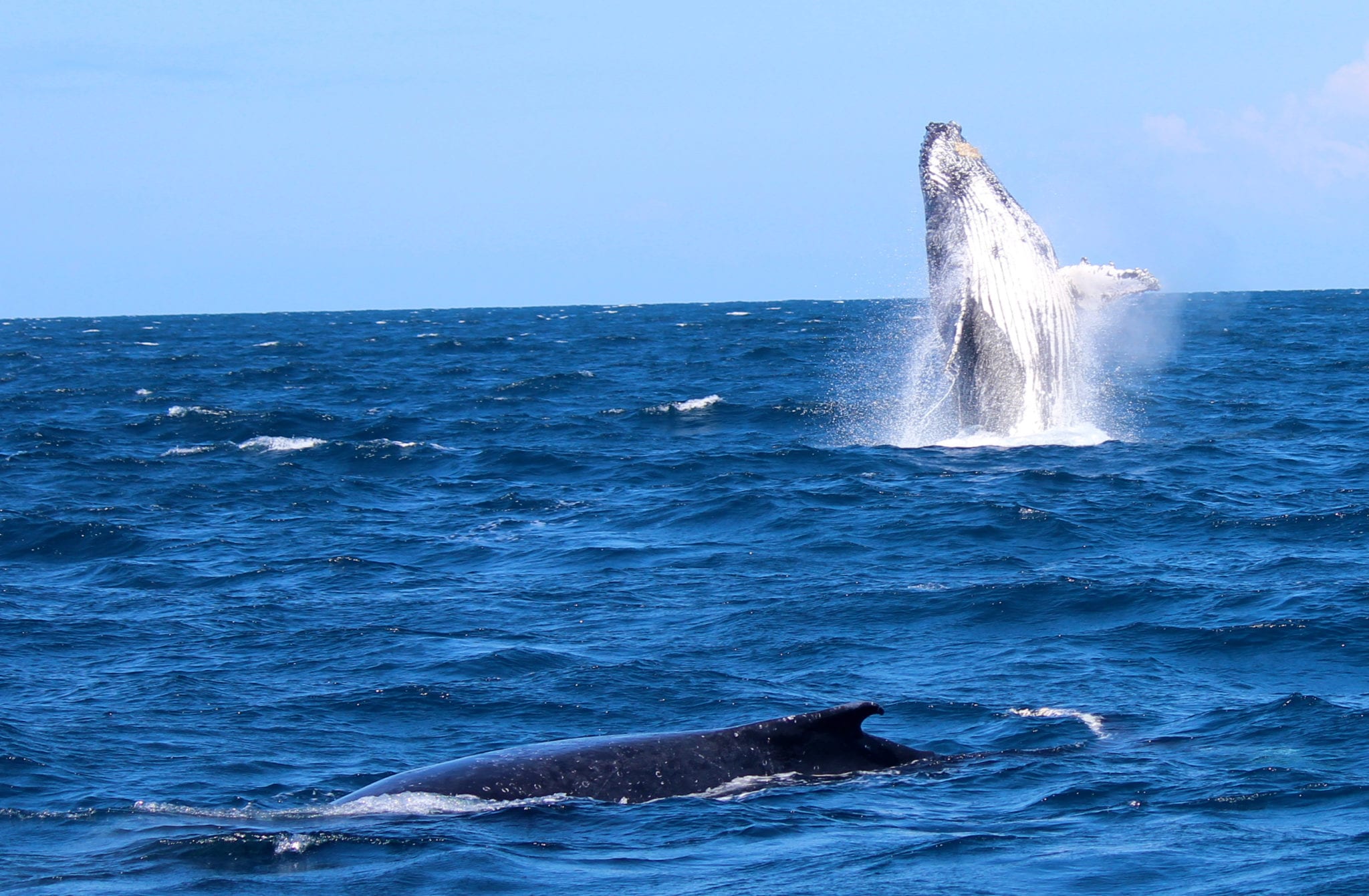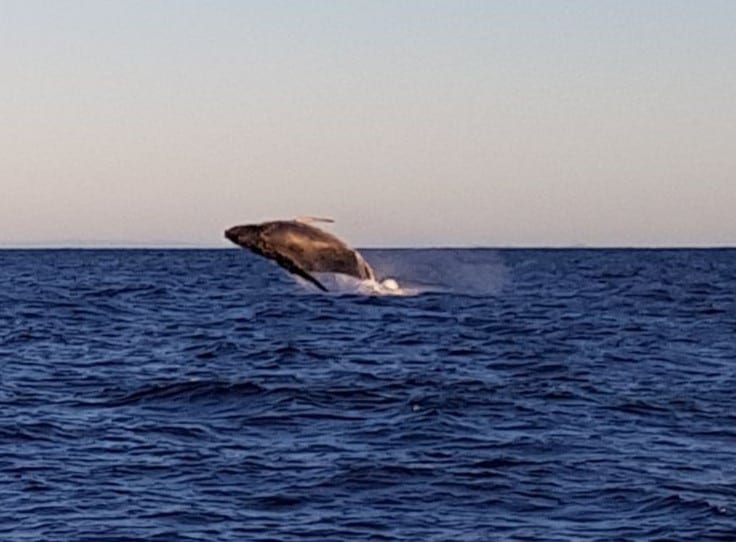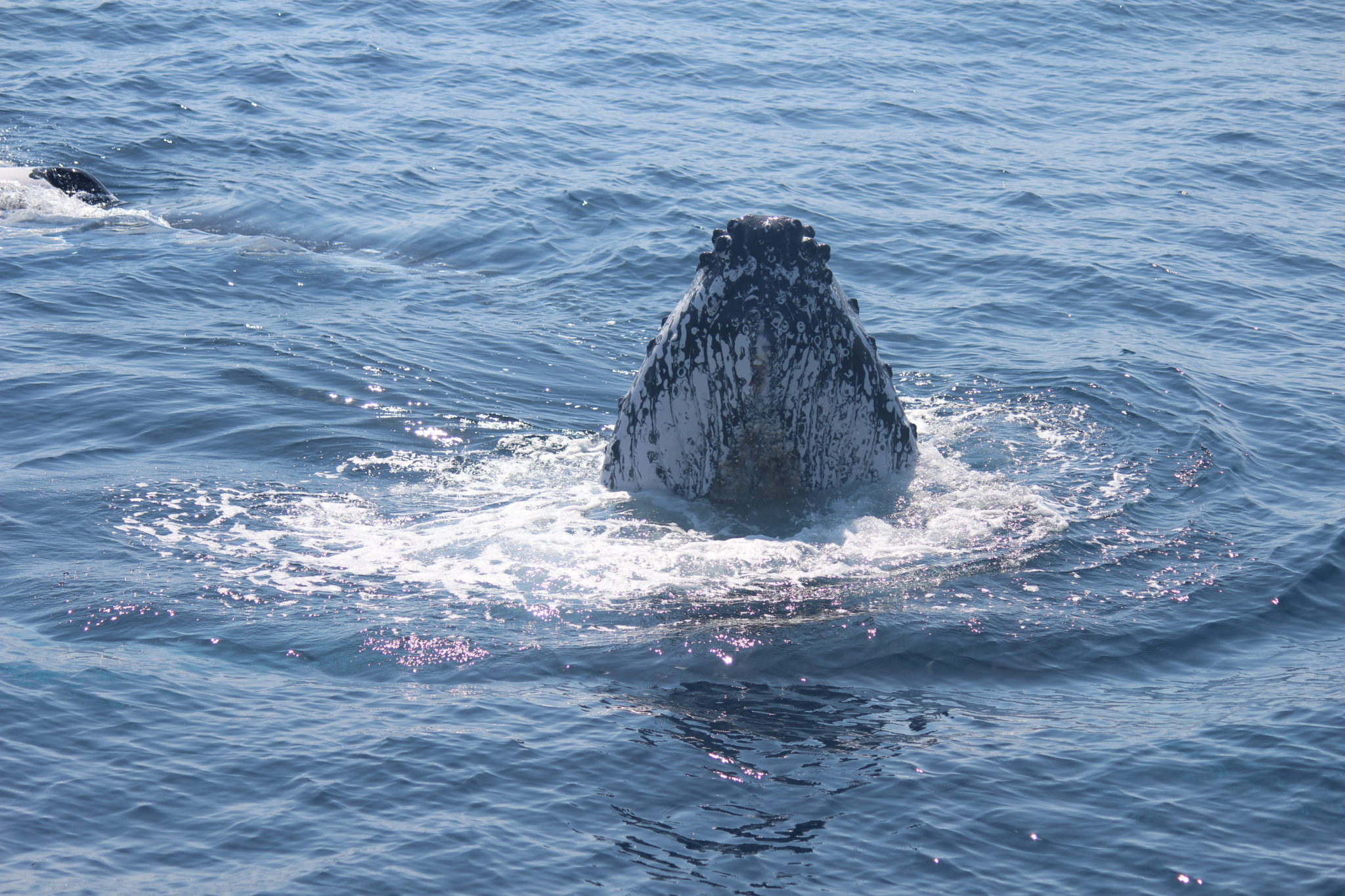Mating
The Humpback Whale, is the most popular whale we see here off the Sunshine Coast, in Queensland. As part of their migration from down south, they head north towards the Whitsundays to mate and have their babies.
The whales usually travel in small groups called pods. They also fast for the whole journey which can take several months.
The males begin competing with one another for the right to mate with the female. Their actions can include anything from vocalising their desire to mate to performing acrobatic feats such as lunging and leaping out of the ocean, slapping their tails and flippers against the water and charging at other male whales.
After a male establishes his dominance and mates with the female other male whales may continue to challenge one another to try to mate with the same female whale. It is not uncommon for a female whale to mate with several male whales during a single season as most species are not monogamous.
When mating season ends the whales make the long journey back to their feeding grounds where they restock on food.
Pregnancy
The female whales gestation period (the period from conception to birth) is anywhere from 10 – 18 months. Calves (baby whale) are nursed until they are a year old and about 8m long. On average a female whale will bare a single offspring once every 1 – 6 years while she is fertile.
During the gestation period the baby whale develops and grows in the mothers uterus and is fed nutrients and blood through an umbilical cord.
Whales are mammals and have live births just like humans. Upon birth the baby whale is usually delivered tail first in order to prevent the possibility of drowning.
Calves are about 5m long at birth and weigh 1.5 tonnes. The cow’s milk has a high fat content (35% compared with 2% for human milk) and milk production can be up to 600 litres a day. Humpback Whales are mammals and drink mothers milk from birth. The female Humpback Whales milk is rich in fat with up to 60% of the milk being fat. The consistency is thought to be is similar to toothpaste.
A suckling calf increases its weight five to eight times during 11 months. The calf develops a protective layer of blubber so it can follow its mother back to cold Antarctic waters. Mother/calf pods often have an adult male escort.
Birth & Baby
The ‘baby’ stage runs from birth until the calf is weaned, during which time the calf frequently nurses on the mother’s nutrient rich milk.
The whales eat by nursing from their mum for about six months. The mum produces milk using her mammary glands, which the baby whale can suck on for food. Each baby needs about 45.4 litres of milk per day to live! That’s huge.
The calf is brought to the surface by it’s mother, for it’s first breath of air and from then on begins to swim and act like a fully grown whale.
To look out for a feeding calf, you will find the female Humpback usually stays underwater while the calf returns to the surface every few minutes to breath between feeding.
Suckling may continue anywhere from 6 months to 2 years or more until the child is fully able to separate psychologically and/or due to the mother no longer producing milk.
If you’d like the chance to experience the magic of humpback newborns playing alongside their parents this whale watching season, and also the older humpbacks breaching and tail slapping, feel free to give us a call on 0412 155 814 or email us on – info@sunshinecoastafloat.com.au. You can also book online if you wish.






